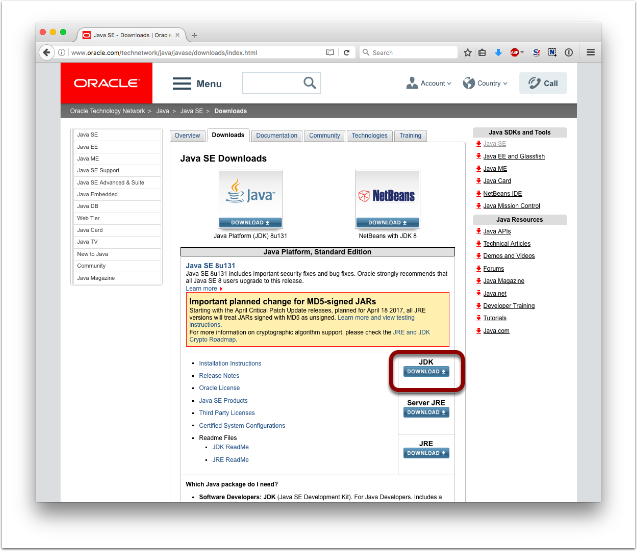Install Java 3d Mac


Instructions for Installing Java 3D 1.5.2. The 1.5.2 version of the Java 3DTM API runs on JDK version 1.5.0 and higher. It has been released for the Windows, Linux, Solaris, and Mac OS X operating environments. See the release notes for more information. Installing Java3D on Mac OSX. Java3D on the Mac performs rendering through a different library package called Java OpenGL (JOGL) and requires those libraries in addition to Java3D 1.5.2. JOGL has been through several versions and no clear installation instructions exist, so I will lay out exactly what libraries must be.
Java 3D 1.5.1 Installation Instructions Java 3D TM 1.5.1 Release This software is licensed by Sun, as specified in the file. You must only use this software in accordance with the terms under which the code is licensed. Instructions for Installing Java 3D 1.5.1 The 1.5.1 version of the Java 3D TM API runs on JDK version 1.5.0 and higher. It has been released for the,,, and operating environments. See the for more information. Linux This release of Java 3D runs on JDK version 1.5.0 and higher.
To install this build, chdir to the 'jre' directory within the jdk and execute the self-extracting binary that you downloaded. For example, if you are running on a Linux/x86 platform and your JDK is installed in /usr/java/jdk1.6.0_01, you would install Java 3D as follows: cd /usr/java/jdk1.6.0_01/jre sh /path-to-download-files/java3d-1_5_1-linux-i586.bin You may need to be 'root' to do this on Linux. Solaris This release of Java 3D runs on JDK version 1.5.0 and higher. To install this build, chdir to the 'jre' directory within the jdk and execute the self-extracting binary that you downloaded. For example, if you are running on a Solaris/x86 platform (including amd64) and your JDK is installed in /usr/java/jdk1.6.0_01, you would install Java 3D as follows: cd /usr/java/jdk1.6.0_01/jre sh /path-to-download-files/java3d-1_5_1-solaris-x86.bin You may need to be 'root' to do this on Solaris.
Windows This release of Java 3D runs on JDK version 1.5.0 and higher. To install this build, execute the binary installer that you downloaded, by double-clicking on the java3d-1_5_1-windows-i586.exe (or java3d-1_5_1-windows-amd64.exe) icon. Alternatively, you can download the java3d-1_5_1-windows-i586.zip file and manually install the necessary files into your JRE. In this case, unzip the file, and follow the instructions in the unzipped README.txt file. Mac OS X No installer is currently available for the Mac OS X operating environment. You will need to download the java3d-1_5_1-macosx.zip file and manually install the necessary files into your JRE.
After you unzip this file, follow the instructions in the unzipped README. Confessions Riddim Zip. txt file.
• NOTE: This is not an official form of support. This is not an official service of Red Hat. These things may solve your worst nightmare, or they may eat all of the cheese in your house. I make no guarantees. Other Resources What if every software developer could gain the knowledge of long experience without having to go through the pain of repeated failure? Read my book,, and find out.
If this FAQ does not answer your question, you should try the following things: • Read the most current. • Search the. • Search the. Net Tv Plus Keygen Generator more. • Ask your question. • Ask your question in the. Contributing to the FAQ If you think that you have a FAQ that's not answered here, or if you see something that needs a correction/update, please! Staying Updated To get updates by email whenever the FAQ is updated, enter your email address here and click 'Subscribe:'.
A: First, read. You can also read the, if you want. Now, I'll give you a summary: Fedora is a Linux distribution from Red Hat that doesn't cost any money, includes only open-source software, and always includes the latest versions of software. Fedora is a community-supported project. That means that you can be, if you want. A new version of Fedora comes out every six months or so. When a new version comes out, the previous version becomes unsupported about a year later.
This means re-installing your OS every 6 - 8 months (currently upgrades between Fedora versions don't go so well). The advantage of using Fedora is that you're always on the cutting edge of Linux development, more so than any other major distro, while still having a stable operating system. Is based on Fedora, so if you want to learn a little about RHEL for free, use Fedora.